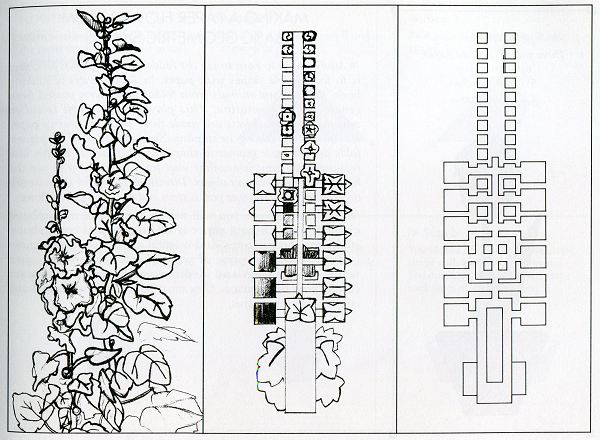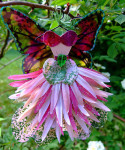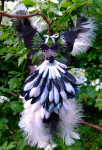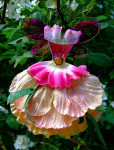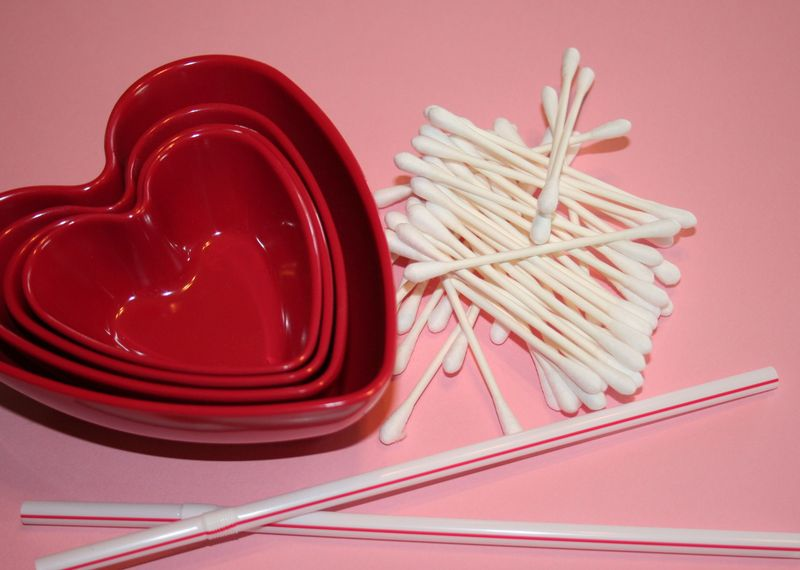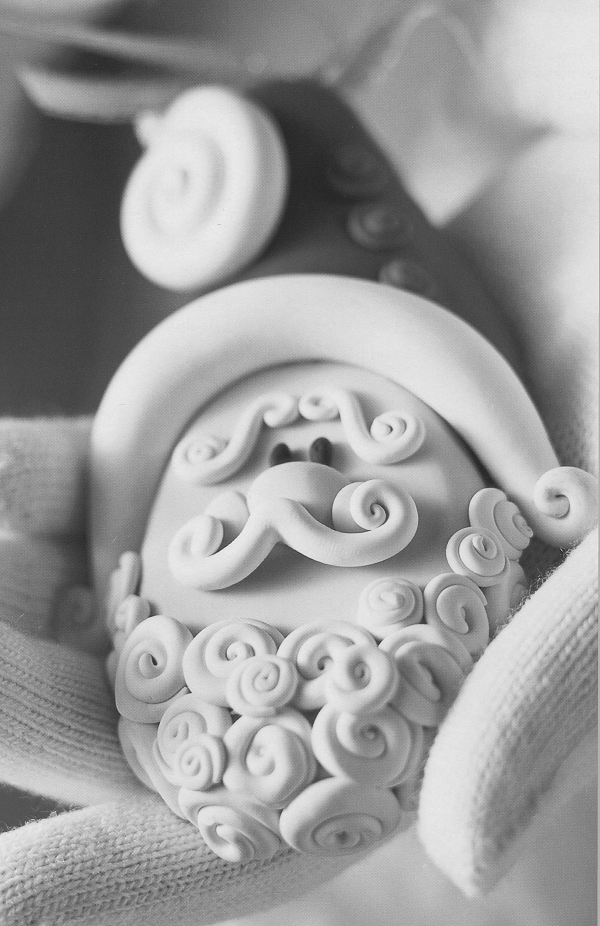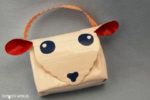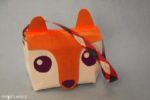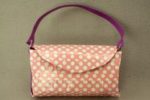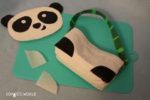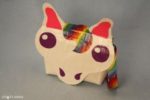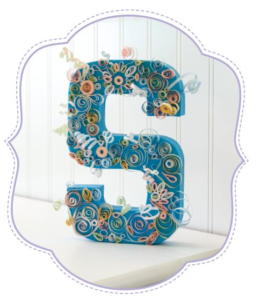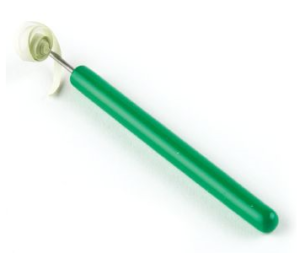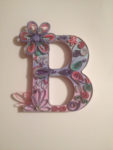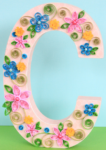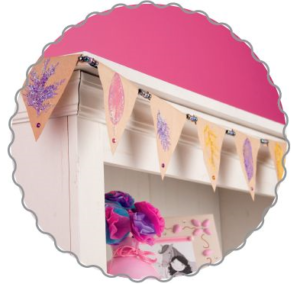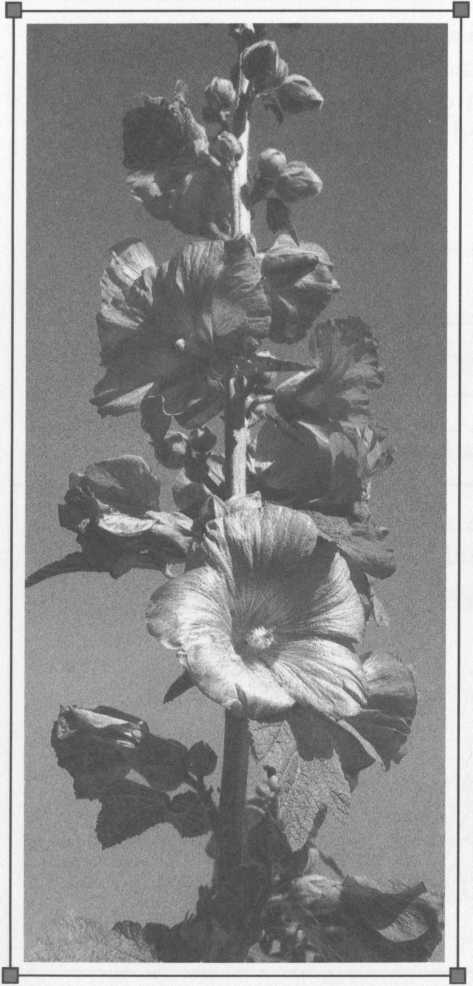 DRAWING REALISTIC AND ABSTRACT FLOWERS
DRAWING REALISTIC AND ABSTRACT FLOWERS
The flowers Frank Lloyd Wright used to decorate the Hollyhock House were simplified to the basic shapes of the Froebel blocks. Some of the flowers that decorate the house are drawn using plane geometry, and some use shapes from solid geometry.
There is not much difference between the photograph of the flowers, and the first drawing below because both the photograph and drawing are realistic pictures that show us how hollyhocks look when they have length, width, and thickness. We see the flowers as shapes in solid geometry.
In the second drawing, the flower shapes have only length and width. They are shapes in plane geometry.
In the last drawing, the flower has been drawn using only flat geometric shapes. The process of simplifying shapes from the very realistic, shaded shapes of solid geometry to the flat, one-color shapes of plane geometry is called abstraction.
Frank Lloyd Wright simplified or abstracted the realistic shapes of a real hollyhock flower to the flat geometric shapes of the flowers he used to decorate the Hollyhock House. We do not know how many drawings he made before he drew the final patterns for the abstract hollyhocks, but, if we work with a photograph and several drawings, we can begin to see the process he used.
Choose a simple flower (such as a tulip). On a clean sheet of paper, draw the flower using the basic geometric shapes in the same way Frank Lloyd Wright drew the hollyhock flower.
